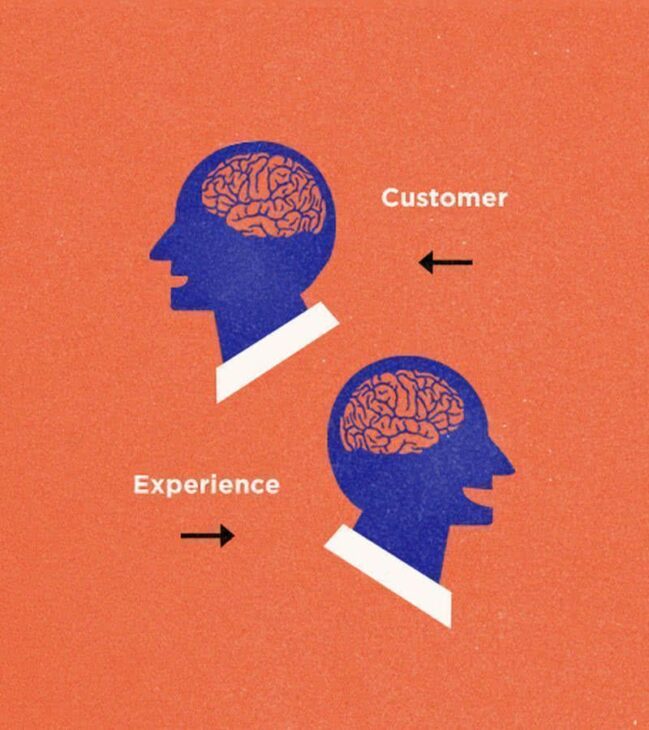Why to Collect Feedback from the Experience as It Happens

When your customer experience research takes place right after the experience itself, you get better quality feedback because the customer still vividly remembers the details.
Customer experience research often happens days or weeks after an interaction with the company. This is a big problem.
Why? Because customers are human and their memories are human too. Your brand’s customers can’t remember what they ate for lunch last Wednesday, and they can’t remember all the details of an interaction with your brand a week ago. Even customers who love the company can’t supply accurate feedback long after the event.
Let’s understand why that is before we look at what to do about it.
Inside your customer’s brain
Here’s how memory works: while a customer’s interacting with your brand, some of the details of the interaction are kept in the customer’s working memory. Working memory is a bit like the RAM of a computer. It doesn’t store data it isn’t currently using, so once the interaction is over the customer’s working memory is immediately “written over” by new incoming information.
After the interaction ends, some of the information about it gets stored in the customer’s short-term memory. This will only include details the customer feels are important or remarkable, such as the size of the item they ordered or the purpose of the product an employee recommended. Short-term memory can only hold a few (probably fewer than 10) items of information at a time, and these memories fade within a few minutes.
Very little information about an interaction with your brand will ever make it to the customer’s long-term memory. And most of the details of the interaction aren’t committed to memory at all — the color of a staff member’s earrings, for example, isn’t likely to be relevant to the customer so they won’t remember it even for a second.
Another interesting neuroscience fact to bear in mind is that researchers believe our negative memories fade faster than positive ones. That means if you wait too long to collect customer feedback, your results will be skewed toward the positive.
So collecting data weeks later won’t give you an accurate view of how the customers felt at the time of the interaction. And while you’re patting yourself on the back for all those positive customer experience reports, an unnoticed problem could continue to grow, hidden by fading memories.
Discover what truly motivates your employees so you can skyrocket your productivity and profitability.
Make the most of customer feedback
When your customer experience research takes place too long after the experience itself, you get poor quality feedback because the customer simply can’t remember all the details.
When you ask for feedback in isolation from any memorable event in the customer’s experience of your company — for example, by running surveys at set points on the calendar rather than as follow-ups to individual interactions — you miss out on the ability to learn how the customer felt about specific events. Instead, all you get is an overview, the customer’s generalized impression of your brand.
To gain valuable, actionable insight t in real-time, you need to collect relevant, event-driven feedback as part of the customer experience. In fact, relevant and event-driven information is probably the only kind your customer’s brain will hold on to. So asking for irrelevant or untimely feedback is a pointless exercise that can only deliver vague data and unreliable insight.
The technology for faster, better insight exists. It’s up to you to use it wisely.
How to get event-driven feedback
Collect customer feedback in real time by inviting them to take a survey during or immediately after their experience with your company. With the right technology, this part is easy.
Create surveys designed with mobile users in mind. Invite customers via SMS or email, or even give them a URL or QR code on printed invitations or signage if you prefer. Regardless of how the customer interacts with your company, you always have at least one way to invite them to give feedback.
Things you can do in real time include:
- Measure customer satisfaction at the end of an interaction to get “moment of truth” feedback.
- Turn a negative customer experience around with positive action to keep customers happy and loyal.
- Thank and reward valued customers to keep them engaged and happy to interact.
- Analyze the incoming feedback to discover new insights and update old ones.
- View trends and patterns so you can see what’s changing in your business.
- Integrate CX data with transaction data, market research, employee feedback and business insights to get a complete view of how they affect each other.
- Share useful insights with employees, managers, investors and other stakeholders to boost morale, motivation and productivity.
- Use your CX information to develop and deliver targeted, personalized follow-up messages to each research participant.
- Make business decisions that actually make sense and help you get ahead, even if you only have a short time to reach those decisions.
Why customers love event-driven feedback
Interestingly, you may collect more positive feedback through real-time, event-driven invitations than through slower or less timely surveys. But wait — does this contradict the idea that fading memories create positively skewed feedback?
No. The reason you may get more positive reactions from real-time customer feedback is that customers like this immediate, action-friendly collection method. Giving feedback at the moment of truth feels more organic and relevant to customers, and relevance has a huge impact on the way customers feel about everything your brand does.
By collecting feedback during an interaction, your survey becomes part of an ongoing conversation about the customer’s relationship with your company. That conversation doesn’t ever have to end. The customer research experience is simply one more aspect of the overall customer experience.
The more relevant and personalized your customer’s experience of your brand and your customer research projects, the more engaged and loyal the customer will be. And the more powerful your CX insights will be, helping your company get a real competitive edge.
Read more about Employee Surveys









